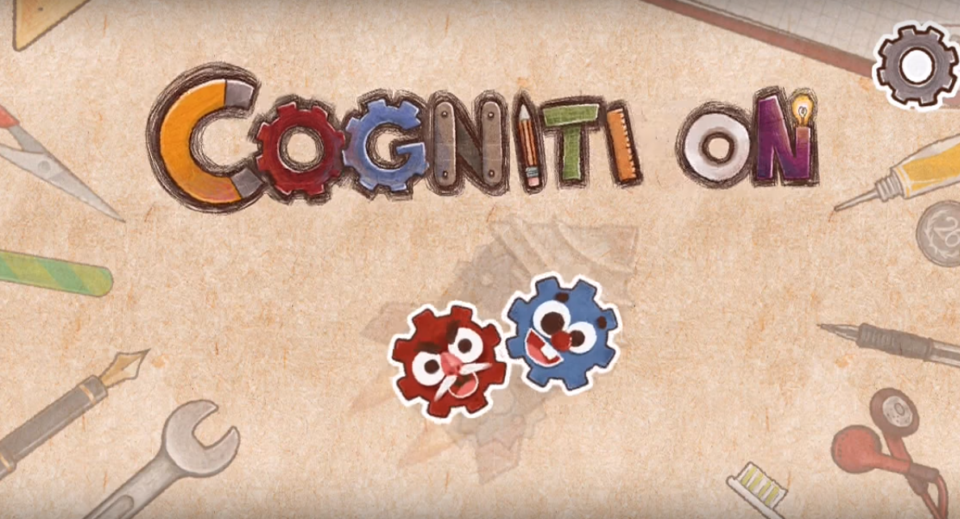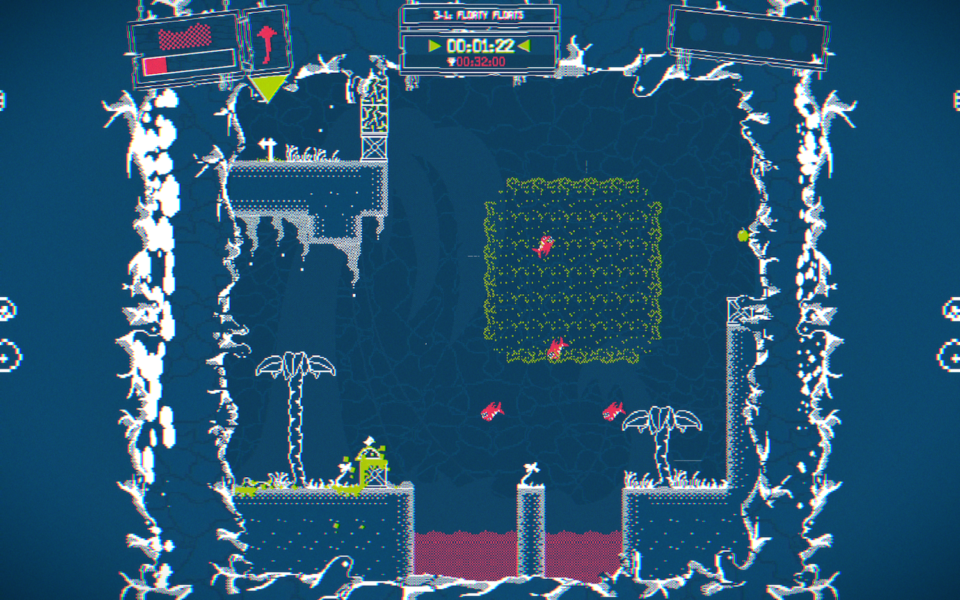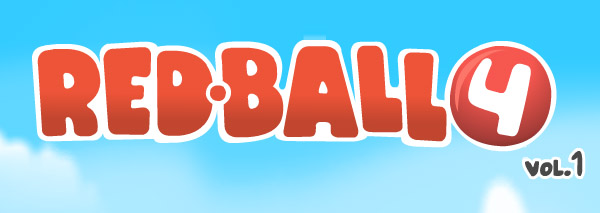“21 Steps to Soul is not just the first game I have developed, it is closely connected to the story of my life”, says Russian indie developer Grigory Everstov as he shares his story of a gamer and then developer.
The number 21 in the game title is a reference to 21 grams that people presumably lose when they pass away. Grigory likes to think that is how much he put into creating his game.
main
Game DevelopmentPostmortem
Cognition: An Iterative Process
LunaFive is an indie studio from the USA, consisting of (surprise!) five members, who came out of the New York University Game Center’s MFA & Incubator program with the goal of making memorable and satisfying indie games. Their debut game, Cognition, is a “tapformer,” a platformer where you move by tapping. Guide Click and Cogsworth, two perpetually rotating cogs, through a series of surreal and increasingly dangerous maze-like environments. With a simple movement system and endearing, whimsical characters, Cognition is designed to be played by anyone, anywhere; the team is happy to shed some light on their development process and the decisions that took the game where it is now from a drastically different beginning.
Game DevelopmentPostmortem
Slime-San: Platformer Inside a Worm
Imagine you’re a slime, enjoying a nice hangout in a forest with your best avian friend.
Everything’s going splendid when, without warning, you get gobbled up by a giant worm! You now find yourself in the precarious position of being digested soon. So what do you do? You jump, slide and slime your way through the giant worm’s intestines and back out of its mouth of course! The developer of Slime-san, Fabian Rastorfer, tells more.
Every second level you’ll be facing a new hazard or enemy type, forcing you to adapt your playstyle and remain quick on your feet. Your platforming moves include a time-slowing morph, which lets you move through otherwise solid green objects, as well as a versatile dash that speeds up the world around you! Careful, however, as the timer does not slow down, which means you need to use that move carefully if you’re aiming for trophy times. In addition to the trophies the game also has 400 collectible apples that you can spend on gameplay modifiers, costumes, shaders or artwork.
If that wasn’t enough, you’ll also be able to unlock a variety of additional modes, such as NewGame+ remixes of all 100 levels, Boss Rush or the uber-challenging 1 Life run. Last but not least, you can also compete for the best completion times online!
Game Feel and Tutorials
The most important thing to accomplish in this platformer has been the “game feel”. Making a jump feel just right, using dash mechanics to add oomph, to give movement a bounce and gravity a strength… It required weeks of stat tuning to get right. Unity has been used due to platform flexibility and a strong editor. That editor allows artists like myself to also do implementation work which expedites development.
The most unexpected discovery was… how much fun we’re having playing our own game! Seriously, we need to stop ourselves from playtesting sometimes! On a more serious note: Tutoring. Getting tutorials to feel just right is incredibly challenging. They can’t be too overbearing, but they also need to be clear to a wide audience. Getting those first levels right is crucial to convey a hook to keep playing.
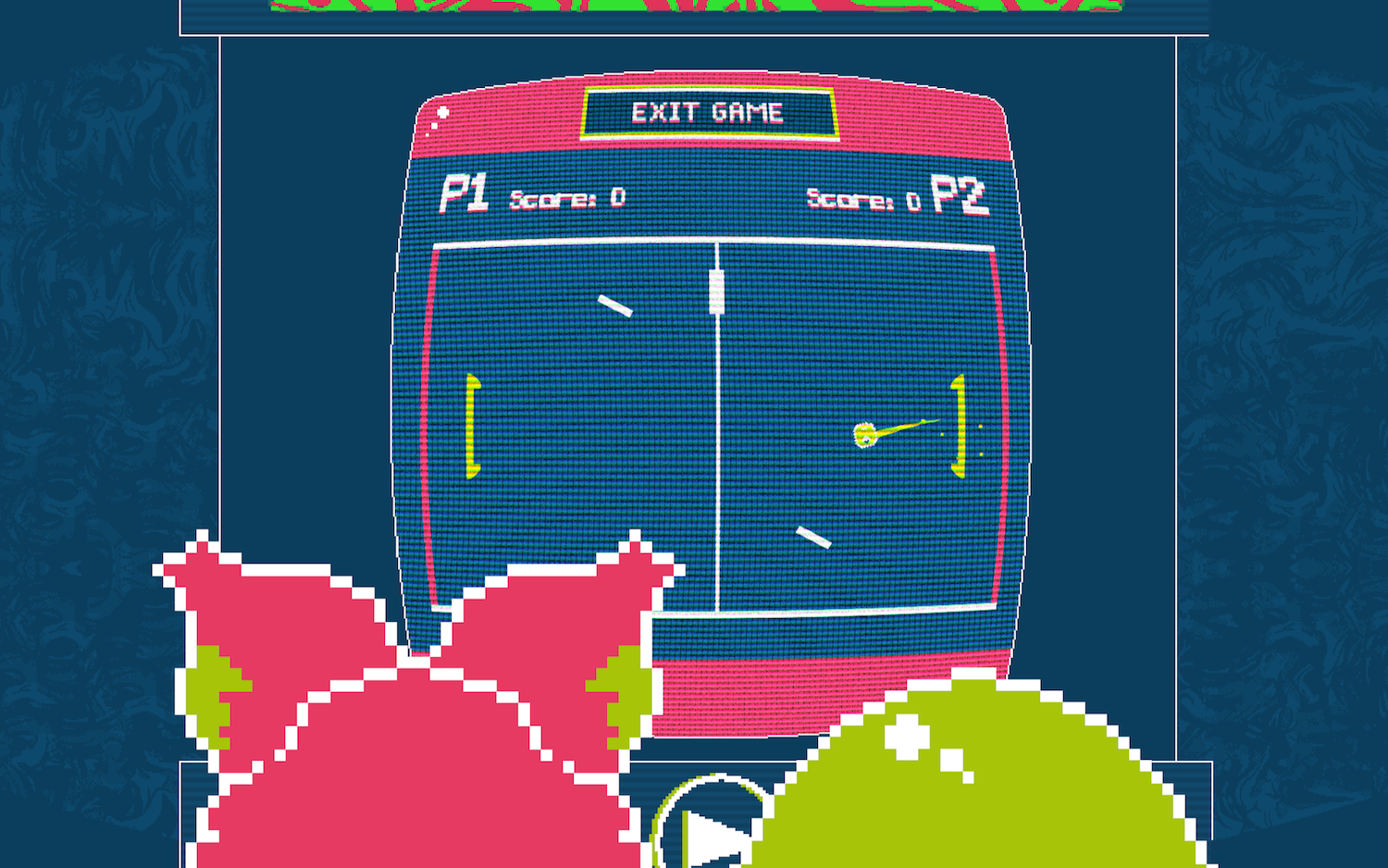

Instead of Black and White
We’re known to have games with a silly premise, and Slime-san is definitely as silly as it gets! But we also like to think that it’s charming and we like casting smiles on people. It’s Fabraz’ newest crazy adventure after the critically acclaimed and award-nominated Planet Diver and Cannon Crasha. It has an entertaining story, with an unlikely character and addictively fast gameplay. It is a visually unique adventure using a carefully crafted, 5-color-palette world filled with fun and goofy Japanese references. The idea kind of just came to me one week after Planet Diver’s release, not really sure what the trigger was! Maybe I’m just weird!
Because the game is so fast-paced and relies on clear signaling for damaging/morphing/solid tiles we required the game to have a low color palette. But instead of going for the classics like white on black, we decided to go for white on blue! It’s a mellow but appealing color that isn’t too harsh on the eyes and it lends a lot of character to the game.
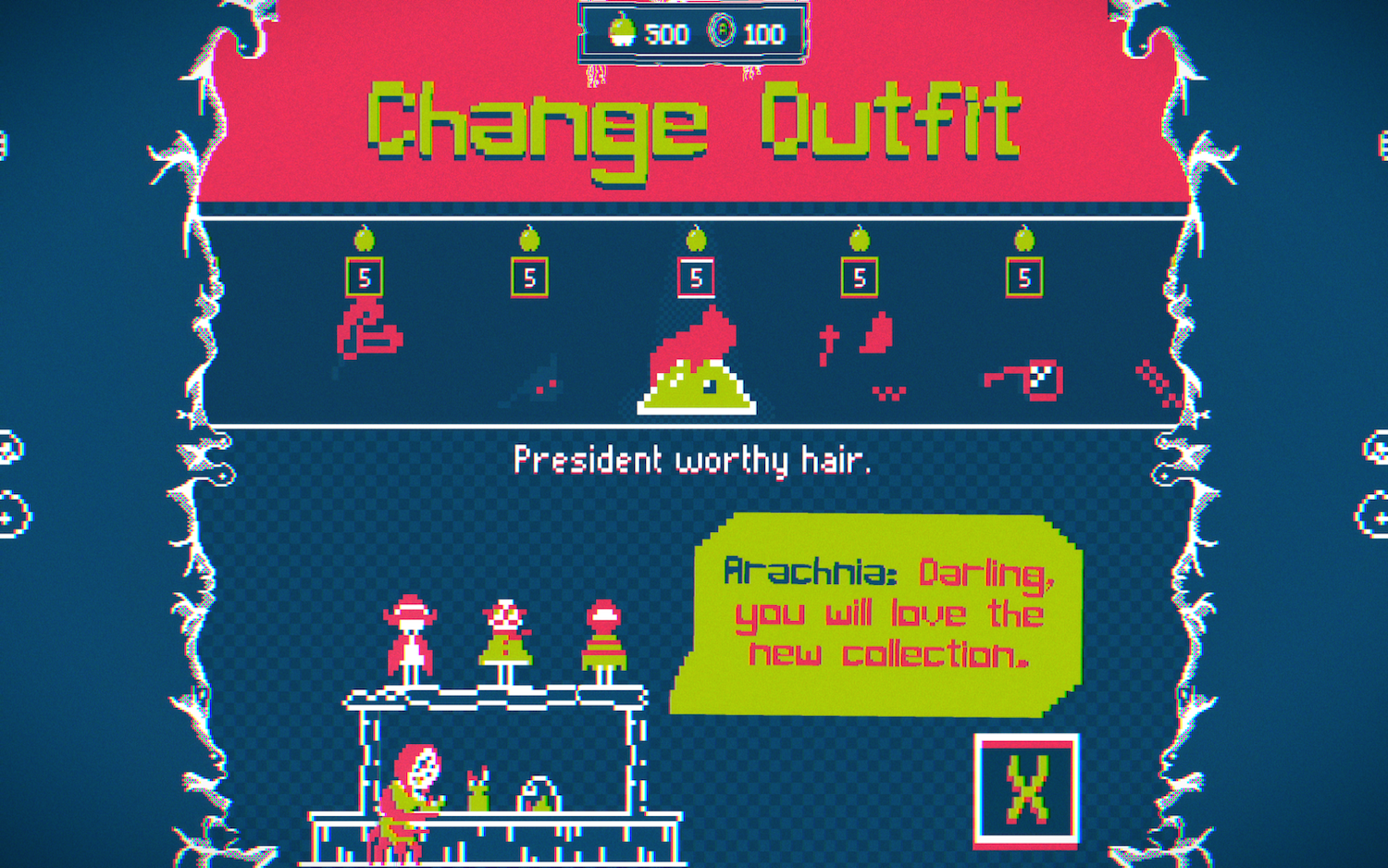

Famous Composers and Just Guidelines
Our core team is based in New York and we’re three people in an office every day. But we work with a lot of people outside of the office as well. Like Britt Brady, Markus Jost, all the composers and more.
The soundtrack for Slime-san features some of the most popular chiptune composers in the world! We’re talking about Adhesive Wombat, Inverse Phase, Mega Neko, Kubbi, Kommisar, FantomenK, Tiasu and so many more! We clearly wanted this to be the greatest game soundtrack we’ve ever made so we worked with more famous composers than ever! They were all super supportive and into the idea so it was a lot of fun working with them. We only gave them guidelines and let them have as much creative freedom as possible - needless to say they created fantastic stuff! I love them all.
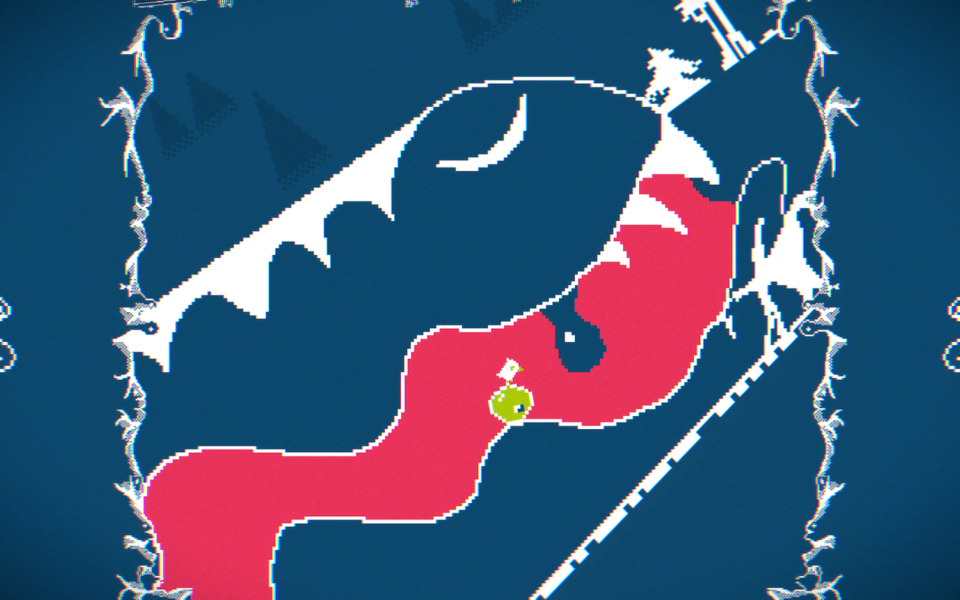
When asked about something he’d like to share but have never been asked about, Fabian comments: “Let’s see… How about my personal philosophy on success? 🙂 We have this philosophy we like to share with fellow devs: You have to work really hard to get into a position where you can get lucky. It’s silly to blame the lack of success on bad luck but it’s also naive to assume your success didn’t depend on it either. You have to work hard, every day, and try your very best to achieve success. To get into the position where success could happen. And someday it might! :)”
Slime-san’s being published by Headup Games and is scheduled to release on Steam (PC,
Mac, Linux) as well as Xbox One, PS4 and Nintendo hardware. Look out for Slime-san in spring
2017! While the team is currently busy with porting Planet Diver to the Wii U and getting Slime-san ready for beta testing.
ContributionsDevelopmentGame DevelopmentIndieOnlinePostmortem
Kill the Plumber: A Collaboration Goes Viral
2015 is the year Bari Silvestre from Keybol went back to his roots - Flash game development. “You can’t help but reminisce about the hay days of the browser games, that can be easily distributed and with the right polish and gameplay you can get some hefty sum via sponsorships. Times have changed though, and you have to be not just twice as good in producing quality games, but your creations should have an interesting original gameplay”, Bari recalls. That is hard to come by, so he just made little Flash games with some interesting twist on existing gameplay. They did get some positive feedback with a feature here and there, but Bari felt something is lacking. His fresh creation, Kill The Plumber, brings to life some gamers’ dreams of playing for the villains.
ContributionsPostmortem
Indie Showcase: RedBallStudio’s Red Ball 4 (Flash)
RedBallStudio is a one-man studio based in Saratov, Russia. Founded in 2009 by Eugene Fedoseev, the studio publishes Flash and iOS physics platformers about their main character – Red Ball. There are seven games about Red Ball in the studio’s portfolio, but Fedoseev continues to publish more Red Ball games in the future.
From selling concrete mixers to game development
My educational background is in programming, but after I finished university I worked as sales clerk selling concrete mixers. I wasn’t interested in programming at that time – it seemed a little boring to me. One day at the end of 2008, while I was at work, a friend sent me a link to a blog. On this blog a guy shared his experience of how he earned money making flash games. I was really surprised because I thought making games was very difficult and could only be achieved with a big team. I’ve read the entire blog that day and after work I went to a bookshop and bought a book about ActionScript 3.0. It took me two weeks to read the book and I started making games while at work and at home afterwards. My first two simple puzzle games were Fastone Pyramid and Rain Drop.
I gained a lot of experience in game development, working with Action Script 3 and communicating with sponsors, but not a lot of money. I realized I really enjoyed creating games, but I could not afford to quit my daytime job.
While reading lots of different tutorials on the internet I found a tutorial on Platform game basics using Box2D. It allowed the player to control a red box and let it interact with physics in the game world. I got very excited and started playing with it. I added different objects and obstacles, unlocked box rotation and finally found out that the box’s body is difficult to control. To fix this I decided to change the box to a ball, thus creating Red Ball in the spring of 2009. Initially I created seventeen levels and added different objects, platforms and flags. I drew the graphics myself, my wife found a great musical soundtrack and after 3 months we released the game. After a while I got a really good offer from King.com and decided to quit my job to become an indie flash developer. Since then I’m working at home, full-time. The past four years I’ve created different games about Red Ball on different platforms (Flash and iOS). I created Red Ball 2, Red Ball 3 and finally Red Ball 4 at the end of the last year. Next to that I’ve created the Red & Blue Balls series (three chapters) where you control two balls - switching between them. With every game I aim to improve the quality by hiring art designers, add story animation instead of comics and improve the user interface. I couldn’t say it better myself then what JayIsGames.com wrote about the Red Ball series progress.
Finding inspiration
The main focus in my games is game- and leveldesign. The seven Red Ball games count a total of over 100 levels. My inspiration for these levels came from some great games I played on the internet. For example, the buttons and levers in Red Ball 3 are inspired by Fireboy and Watergirl. Another game, Lee-Lee’s Quest 2 inspired multiple aspects of Red Ball 4. I really like the popular iPhone game Doodle Jump which is why I wanted to add a parody-level in Red Ball 3. The gears in Red Ball 4 are something I added after spending quite some time on a physics learning tool called Algodoo.
Other things in my life inspire me as well. On a vacation to Egypt I visited the pyramids (as seen in Red Ball 3) and I came up with the helicopter level after I was given a RC helicopter for my birthday. Wikipedia articles about different mechanisms also always inspire me to create new things.
Level design
Each level in the series goes through three different stages of development. First I draw some level challenges with a pencil and sketchbook. This part of the process takes about 50% of the time. The fun part about this stage in development is that I can do this wherever I want. Sometimes I work at a café, the beach or while traveling.
After that I combine different challenges into one level and sketch a background layer in Flash. Then I outline my sketch with simple primitives and create the level’s physics. This stage requires a lot of gameplay testing to see if challenges need to be changed. For example, a gap could be too big to jump over or some challenges could be very hard to pass.
This level is playable but it still needs some nice aesthetics. For this last stage in development I send these levels to my artist.
The benefits of working with sequels
I’m really happy to be able to create games, it gives me both satisfaction and financial profit. The last four years I’ve created seven games about Red Ball and I’m not planning to quit anytime soon. The benefit of making sequels is that both players and sponsors know your games and want to play / buy them. Over time you create a fan base that follows your projects. For example; Red Ball 3 has doubled the results of Red Ball 2 when it was played 60 million times in the first year after launch. Sponsors also know what to expect from your games. As a result you get more profit. For example; I got twelve times more profit from Red Ball 4 then from the initial Red Ball.
Another benefit of working with sequels is that you can save a lot of time and increase your production efficiency when you don’t have to create game from the beginning. You can simply add new levels to your game engine. That’s how I’m currently working on developing Volume 2 of Red Ball 4. It will be the same red ball character with the same physics, but I’m adding fifteen new levels.
After completing Volume 2, Fedoseev plans on creating a Volume 3. His motivation is to provide the fans of the Red Ball series with a lot of levels to play in the future. The studio is currently working on a website where you can follow their progress; www.redballstudio.com.
ContributionsPostmortem
Post-Mortem: Free Lunch Design’s Icy Tower 2 (iOS & Android)
Located in Gothenburg, Swedens second largest city, Free Lunch Design employs a creative team that produces world class games for multiple platforms. The team has produced over 70 games for PC/Mac and iOS/Android so far; some of them have been downloaded millions of times. Free Lunch Design is looking to keep innovating and develop games that will knock your socks of, no matter what platform or genre. In this article we will focus on describing some major events in the development of Icy Tower 2.
One-man-army origins
Free Lunch Design was originally a one-man-army (consisting of Johan Peitz ) making retro-inspired PC games for free download. Out of the numerous games released, one of them stood head and shoulders above the rest: Icy Tower. Since its release in 2001, it became especially popular among young students around the world, in part due to the ease in which it could be installed on a school computer. The simple and fun game found a following and lived a life of its own for the remainder of the 00’s. Meanwhile, Johan Peitz joined forces with local game developers Muskedunder, to create advergames. Soon Muskedunder aimed to change focus from B2B to B2C, and to build on the previous success of Icy Tower became the obvious first step. A successful release of a Facebook version of Icy Tower in 2009 solidified the pursuit for B2C, and a name change to Free Lunch Design confirmed the decision.
Once mobile gaming became the next big thing, we knew the time for Icy Tower 2 had come. The game hit the app store in November of 2012, containing several exciting changes from the original to keep it fresh and suitable for handheld devices. The release was another success with 1 million downloads in 10 days, which led to the decision to bring the game to Android.
The Game Design Gauntlet
Johan’s short leave could have gone horribly wrong, but in the end just cost us a little bit of extra time. Actually, it led to a new way of working with game design proposals. Johan and Jimmy are game designers with different approaches and strengths. The key was not to let egos run the show, but to allow them to contribute mainly with their respective strengths. We went all in with this approach, involving the entire team in the game design. This made the differences between the designers play a proportionally small part and tapped into the full potential of each team member.
The way we involved the whole team was by letting all game design ideas run through a “gauntlet”. Every member of the team sat down in a “group design session” and it was the designer’s (or anyone else in the team with an idea) job to sell an idea for a problem solution, a feature or design change. It was everyone else’s job to try their hardest to shoot the idea down. If the designer could defend the idea in a convincing way, the idea passed the “gauntlet” and earned a slot in the next sprint. This went on for several weeks and really made a huge difference for the design quality, team morale and general fun factor of working on the project.
Everyone was involved and felt they could bring up worries they had about the game in a constructive way. This was a new way to work with design for us, and even though it cost a lot of hours, we’ll be using “the gauntlet” again! One important thing to remember is to have some form of emergency brake, when the sheer joy of being creative is no longer relevant to solving your problems. Be problem oriented and assign a moderator to pull the brake.

Good is not good enough
One lesson from our former B2B business model was that “good is good enough”. This had to be repeated as a mantra whenever our pride and ambition to deliver premium quality products was larger than what the budget allowed. At the end of the day we had to deliver what was paid for, not what we wanted to deliver in order to feel proud.
Going from B2B to B2C, we had to re-program our minds in this area. Simply being “good enough” wouldn’t cut it, facing the cut-throat competition on the mobile platform. We had to raise the bar several times, which was an internal struggle. The uncomfortable truth was that the game was good, but not quite good enough, when the budget was spent. The budget for the project was set with the old “good is good enough” in mind, and we had to admit defeat when we realized the production would need to be extended several more weeks in order to get the game where it needed to be.
In retrospect this could be viewed as a failure to see the obvious, but the lesson is to understand that every start-up company has its growing pains. The discomfort it brings must not be seen as failure, but instead an opportunity to grow. We had in fact changed our business model completely and there are hard lessons every time you face a new area of expertise to master. This was one of them. Handling them successfully - albeit at a real cost - makes you grow. Growing is painful, so prepare to deal with it.
The complexities of being simple
You would think that having simple gameplay and having made several successful incarnations of that gameplay would make things easier. In some ways it is easier, since we have the experience and a proof of concept. In some ways it’s harder, since you work under the restrictions to not stray too far away from the original.
One other challenge was to add new and exciting features without changing the objective of the game. It has always been about getting as far up the tower as possible. Introducing mechanisms to acquire money - and things to spend the money on - diluted the simplicity of just beating your high score. We were obsessed with the thought of keeping the game objective true to the original. In the end we had to accept that the game could be played with different objectives for different players. Some want to complete stuns, others try to hoard money and yet other just want to have the highest score possible. You can’t tell someone how they should have fun, just let them play and figure it out themselves. We could do other things though: put in extra effort in the tutorial; adjust the timing in which we introduce new features and in overall presentation of the tower collapsing.
Personal growth
The biggest impact from a personal growth aspect was probably the way the game design gauntlet affected the team. Some team members stepped out of their ordinary role and got to shine elsewhere, either with an idea or throwing something wacky out there that triggered another person to formulate the “sane” version of the same idea. You don’t have to be a designer to propose an idea, just getting a design idea challenged from different points of views is healthy. It leads to constructive dialogues where people not only grow closer, but team members can have a lasting impression on your personal methodology in creative scenarios.
In retrospect
The development of Icy Tower 2 took longer than initially expected, but resulted in big value. It taught us how to act when losing key members, what it takes to raise the bar (quality-wise) and how to keep our heads in the game when assumed simplicity grew complex. Involving all team members in the design process gave us a fresh take on the creative process and we think that’s reflected in the game, which we feel successfully introduces new and fun ideas to a classic game.
Icy Tower 2 has recently been released on Google Play. Free Lunch Design will be sharing more in-depth insights on Icy Tower 2 during their indie-postmortem talk at the Casual Connect Europe conference in Hamburg, Germany.


